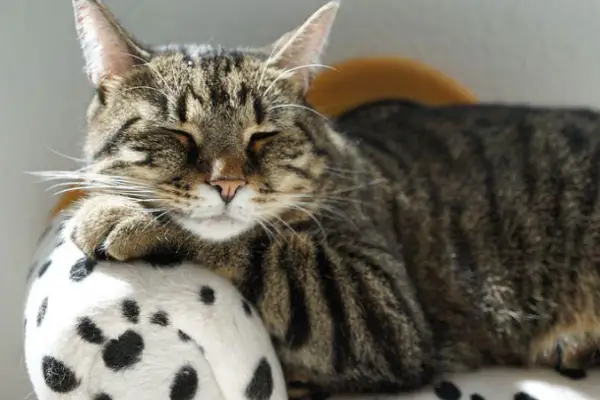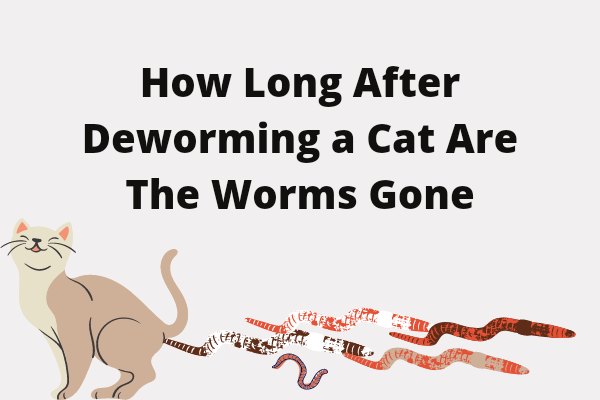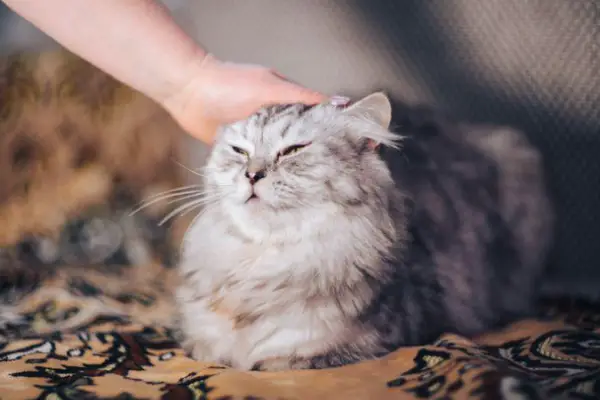14 Most Common Cat Sick Symptoms & Care Tips

Cats are good at hiding illnesses as they are known to keep illness to themselves, so let’s discuss some common cat sick symptoms every cat owner should know.
In this post, I will try to highlight the most common cat sick symptoms, some cats may combine some of these cat sick symptoms at a time.
Whichever way, once you notice two or more cat sick symptoms on this page don’t ignore it try and talk with a qualified veterinarian.
I will try to keep things as simple as possible, keep reading…
Cat Sick Symptoms
The following are some of the most common cat sick symptoms you should know:
1. Persistent changes in appetite
Persisting fluctuations in a cat’s appetite are a sign that something is wrong with your cat or the food you are offering to your cat.
Anorexia nervosa is a condition that can be seen when a cat’s appetite is lost and he or she is unable or unwilling to eat.
Intestinal parasites, hyperthyroidism, diabetes, or a gastrointestinal illness that causes poor food absorption can all induce an increase in appetite.
Nausea, fever, food aversion, gastrointestinal disorders, or oral discomfort can all cause a loss of appetite these may be due to dental disease, a mass, a foreign body, or trauma.
If a cat’s lack of appetite lasts more than 24 hours, it might be dangerous to his or her health, and you should take him or her to the veterinarian right once to find out why.
2. Increased vocalization
Some cats meow more than others, and this varies depending on the breed. Ragdoll cats and Siamese cats, for example, are known to meow more than some other cats.
However, if you see your cat meowing more or in a different way, they might be attempting to express physical or mental pain.
When cats are hungry or in discomfort, they may meow louder, but if this is more than you’re used to hearing, something is clearly wrong.
Some cats acquire cognitive impairment, or senility, as they get older, which might affect the frequency with which they meow.
Read more: 13 Common Dying Cat Symptom.
3. Persistent lethargy
Persistent lethargy is one of the major cat sick symptoms you should always look out for.
Sluggishness, weakness, or dullness are all signs of lethargy in cats, and they’re simple to spot.
Despite the fact that it is one of their favorite activities, lethargic cats may refuse to go for a stroll, play, or eat.
Keep a watch on your cat’s lethargy, whether it’s complete or partial, and take him to the veterinarian if things don’t improve.
Sedentary cats like to sit and lie down and do not respond to your calls, thus this situation may be different.
4. Persistent self-isolation
Cats who conceal are most often attempting to communicate with their household.
Self-isolation from favorite activities is one of the most typical indicators of a sick cat; while this may be uncomfortable for some cat owners, recognizing your cat’s desire for seclusion is critical.
Cats will hide if they are afraid, but they will also hide if they are agitated, in pain, or trying to avoid a feline or human family member who intimidates them.
If your cat used to run up to you and chase the ball, but now he doesn’t, there’s something wrong that has to be addressed.
5. Continues weight loss or gain
Constant, healthy weight is a strong predictor of general health, however, any large weight shift might indicate an underlying health problem.
Weight fluctuations in cats, whether gain or decrease, are always troubling.
Either of these symptoms might indicate an underlying health issue in cats and shouldn’t be totally ignored.
In the near term, weight decrease is more important, although weight increase is typically more hazardous over time.
Make an appointment with your veterinarian for a check-up or at the very least a weight check if you are unsure about your cat’s weight.
If your cat’s weight drops by 10%, bring it to the attention of your veterinarian. In smaller cats, this might be as little as a one-pound weight loss.
6. Persistent vomiting
Persistent vomiting is one of the most common cat sick symptoms you should keep an eye on.
It’s not unusual for cats to vomit up a hairball or puke upright after eating.
However, if they vomit regularly, especially for two or more days, it might indicate major concerns.
Also, keep in mind that vomiting that lasts longer than two days might cause dehydration.
Keep an eye on your cat’s vomit to see what it looks like and how often it happens.
A visit to the veterinarian will be required if it has an odd look, includes blood, or occurs often.
7. Frequent diarrhea
Diarrhea can suggest a range of issues, including food indiscretion, intestinal parasites, and a variety of other issues.
Diarrhea, if left untreated, can cause dehydration and additional intestinal irritation. It’s also incredibly distressing for your cat.
Constipation can also produce vomiting and the passing of very tiny volumes of watery stool; however, diarrhea that occurs frequently can indicate a health problem.
Make an appointment with your veterinarian and, if feasible, bring a stool sample with you.
8. Increased or reduced urination
Increased or reduced urination is also one of the most common cat sick symptoms that may be seen earlier or late before an illness sets in.
Changes in urination should always be addressed. They usually suggest a problem with the urinary system or the kidneys.
Schedule an appointment with your veterinarian if you detect a change in the frequency or quantity of urine, incontinence, or blood in the urine.
If your cat is trying to urinate but nothing comes out, this might be a serious problem, especially in male cats.
Take your pet to the vet right away.
9. Sudden behavioral changes
When a cat is in pain, he or she will display behavioral changes such as decreased activity, lethargy, or a retreating demeanor.
When a cat is sick, not all of them will act adversely; some will become clingy or show signs of increased neediness.
When your cat’s personality changes over time, especially as he gets older, it’s natural.
However, if your typically friendly cat becomes aggressive, or if your cheerful, confident cat becomes fearful, you should consult your veterinarian.
It’s an even more serious scenario if your cat appears puzzled or disoriented.
10. Sudden changes in appearance
Sudden changes in appearance are also one of the most common cat sick symptoms you should look out for, especially if you have a long-haired cat.
Obese cats have a hard time brushing their rear legs and spine around the tail area, which can result in the matting of the haircoat.
Over-grooming might be a behavioral issue, but it could also indicate that your cat is suffering from a skin problem or is in discomfort.
If you see excessive grooming, schedule an appointment with your veterinarian to determine the source of the problem.
However, if a cat is in discomfort in one or more joints, he or she may avoid brushing that region entirely, resulting in clumped or matted fur.
Pain can produce an increase or reduction in grooming activity in cats, which may seem paradoxical.
You can also see swelling of the paw or other parts of the body of the cat which is seen as one of the common cat sick symptoms.
11. Sudden avoidance of litter box
Sudden avoidance of litter boxes by a cat can also be linked to one of the common cat sick symptoms.
If your cat is suddenly unable to urinate, get veterinarian help right once.
A sick cat might have a blockage in their lower urinary tract, most commonly in the urethra, which is a medical emergency.
If cats link discomfort with the litter box, they may stop using it and begin urinating or defecating elsewhere.
This can occur as a result of a bladder infection, or gastrointestinal disease-related diarrhea that makes getting in and out of the litter box difficult.
In multi-cat households, another reason cats avoid the litter box is that one cat guards it and prevents the other cat from using it.
13. Changes in a cat’s drinking habit
Changes in a cat’s drinking habit can only be observed by cat owners who pay close attention to their cat’s drinking or eating habits.
Increased thirst in cats can imply a variety of problems.
It usually indicates the presence of a condition such as renal disease or diabetes mellitus.
Excessive thirst is a symptom of endocrine illnesses such as diabetes and hyperthyroidism, which are frequent in elderly cats.
It might be a significant concern if your cat’s water bowl is being emptied quicker than normal, or if your feline buddy is seeking water from strange locations such as the toilet or faucet.
Many cat owners are unaware that their cats drink water.
So, if you notice your cat spending more time by the water dish than usual, it’s a sign that something is wrong.
Make an appointment with your veterinarian if your cat is drinking excessively or insufficiently.
Read more about Cat Stomach Problems Symptoms You Should Know.
14. Runny eyes or nose
Respiratory problems are indicated by sneezing, panting, runny eyes and nose, or other flu-like symptoms, as well as gasping or shortness of breath.
Squinting, hazy or red eyes, and excessive discharge from your cat’s eyes might all indicate disease or harm.
Make an appointment for your cat as soon as possible; keep in mind that eye diseases can progress swiftly and result in blindness.
You must first check with a veterinarian before using medication to treat an illness or alleviate clinical symptoms.
There you have the most common cat sick symptoms every cat owner should know and keep a tab of.
How to care for and comfort your sick cat
The following are some common approaches for calming and caring for a sick cat:
- Offer a comfortable bed and blanket.
- Spend more time with your sick cat.
- Use a quiet and soothing tone to talk to your sick cat.
- Always approach your ill cat with caution.
- Keep your sick cat hydrated.
- Provide a relaxing and peaceful atmosphere
- Always keep your sick cat clean.
- Never shout at your sick cat.
- Provide smaller meals at regular intervals.
- Avoid any further source of anxiety.
- Keep your sick cat’s temperature in check.
- Groom your sick cat and keep him clean.
- Avoid movements around your sick cat.
Check here to find out more details on how to care for a sick cat.



![Obesity in Ragdoll Cats [Questions] Obesity In Ragdoll Cats](https://petcreeks.com/wp-content/uploads/2021/03/Obesity-In-Ragdoll-Cats.jpg)

![Cat Lethargic Not Eating or Drinking [Reasons] Cat Lethargic Not Eating or Drinking](https://petcreeks.com/wp-content/uploads/2023/02/Cat-Lethargic-Not-Eating-or-Drinking-768x555.jpg)
